Product Overview
A Cobia trophy fish mount from Gray Taxidermy is handcrafted in the U.S. We combine over fifty years of experience and skilled craftsmanship to ensure that your custom trophy mount exceeds your expectations of what a perfect custom fish mount should look like.
Our skilled artists take pride in capturing the rich beauty and realism of nature that each unique marine species bring. A fish mount from Gray Taxidermy will capture and commemorate a memory of a life time. We are able to transform raw materials into the ultimate representation of an angler's most notable achievement.
Providing great attention to detail and exceptional quality and true craftsmanship is our motto while we continue to serve customers around the world.
Gray Taxidermy goes to great lengths to ensure the precise color and characteristics are resembled in your custom fish mount.
Before leaving our facility, each custom fish mount is thoroughly inspected to ensure our goal of 100% customer satisfaction.
Product Specs:
- Available Sizes: 35 - 66 in.
- Details: Fired-Enamel Glass Eye
- Product Options: Wood Plaque, Custom Base, 360°
-
We also offer elegant solid wood plaques to accompany yor trophy mount. Includes traditional wood plaque with sublimated personalized information. Just ask for more information.
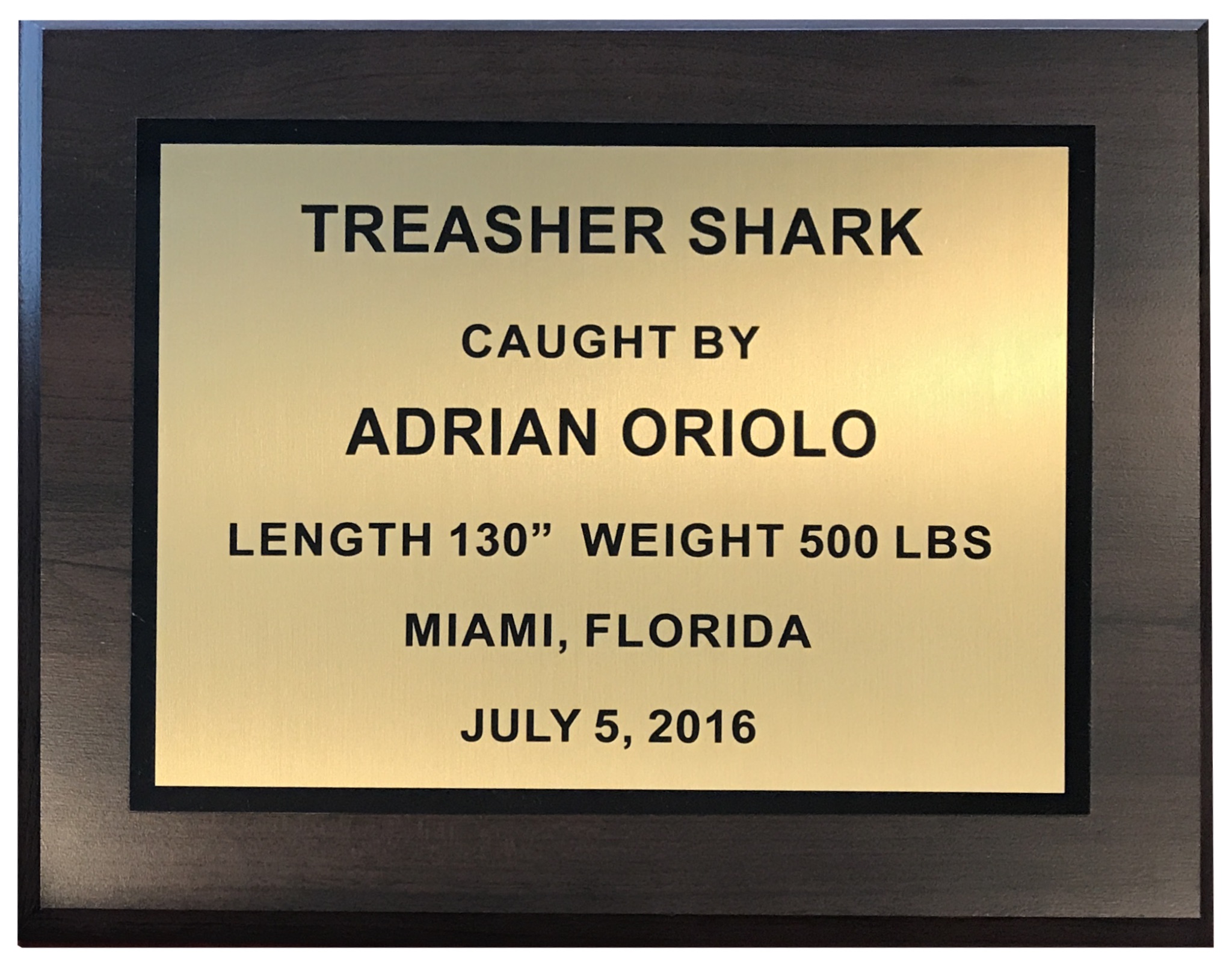
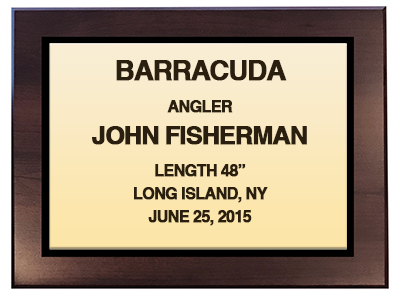 15 in x 12 in or 10 in x 8 in personalized wood plaque.
15 in x 12 in or 10 in x 8 in personalized wood plaque.
Color: Gold
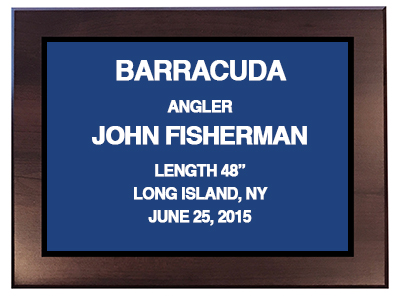 15 in x 12 in or 10 in x 8 in personalized wood plaque.
15 in x 12 in or 10 in x 8 in personalized wood plaque.
Color: BlueAvailable for all fish species
Species Information
Scientific Name: Rachycentron canadum
Size: Up to 80 pounds and over 5 feet long. Most caught off piers are fish under 10 pounds in weight.
Location & Habitat: The cobia is distributed worldwide in tropical, subtropical and warm-temperate waters. In the western Atlantic Ocean this pelagic fish occurs from Nova Scotia (Canada), south to Argentina, including the Caribbean Sea. It is abundant in warm waters off the coast of the US from the Chesapeake Bay south and through out the Gulf of Mexico. The cobia is also found inshore inhabiting bays, inlets, and mangroves. Remoras are often seen swimming with cobia.
Description: The body is elongate and torpedo-shaped with a long, depressed head. The eyes are small and the snout is broad. The lower jaw projects past the upper jaw. The skin looks smooth with very small embedded scales. Easily distinguished by the first dorsal fin which is composed of 7-9 short, strong isolated spines, not connected by a membrane. Second dorsal fin is long with the anterior portion elevated. The caudal fin is round to truncated in young fishes, and lunate in adults with the upper lobe extending past the lower.
Cobia lack an air bladder. The body is dark brown to silver, paler on the sides and grayish white to silvery below, with two narrow dark bands extending from the snout to base of caudal fin. These dark bands are bordered above and below by paler bands. Young cobia have pronounced dark lateral bands, which tend to become obscured in the adult fish. Most fins are deep brown, with gray markings on the anal and pelvic fins. Cobia have bands of villiform teeth on jaws, and on roof of mouth and tongue.
Cobia are more common at weights of up to 50 pounds. They reach lengths of 20-47 inches, with a maximum of 79 inches. Cobia grow quickly and have a moderately long life span. Maximum ages observed for cobia in the Gulf of Mexico were 9 and 11 years for males and females respectively while off the North Carolina coast maximum ages were 14 and 13 years. Females reach sexual maturity at 3 years of age and males at 2 years in the Chesapeake Bay region.

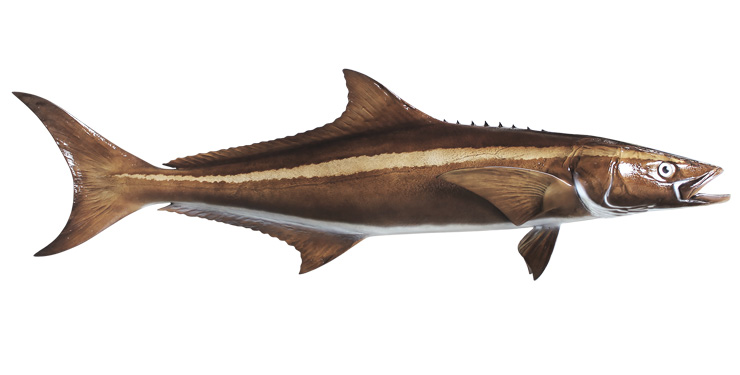
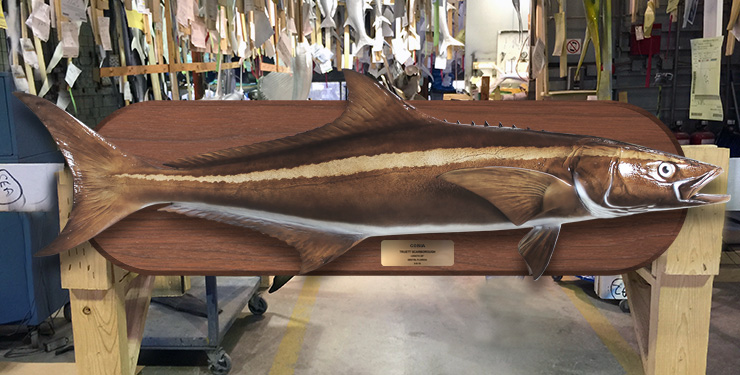
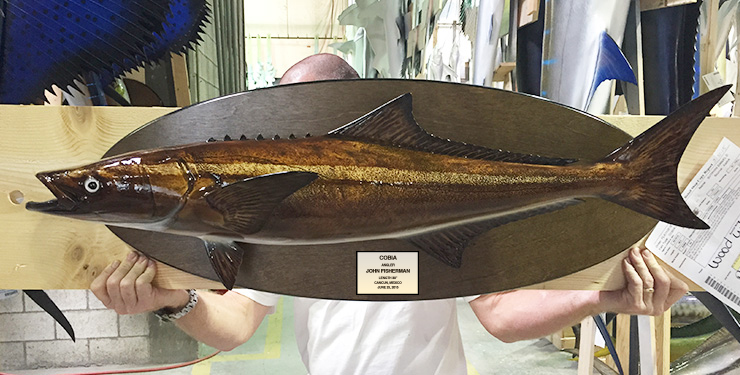


Call Now: 800.452.5501